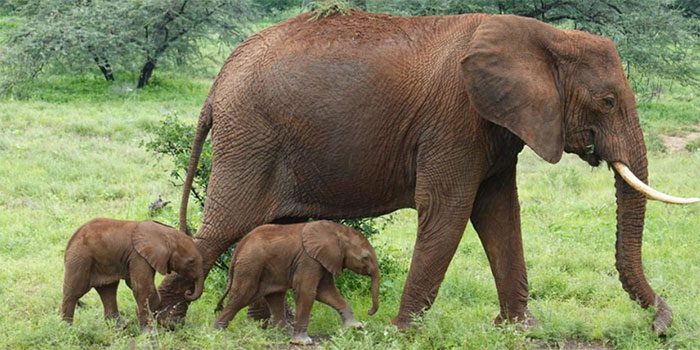Typically, twin births account for only about 1% of all elephants born, and not all twin elephants survive.
On November 24, the research and conservation organization “Save the Elephants” announced that a female elephant in Kenya had given birth to two calves. This is a rare occurrence for the largest land mammal in the world.

Mother elephant Alto and the twin calves in Samburu National Reserve – (Photo: Save the Elephants).
The organization “Save the Elephants”, based in Nairobi, Kenya, reported that the elephant named Alto gave birth to one male and one female calf in Samburu National Reserve, Kenya last year. Currently, the two calves are growing up healthy in the reserve.
A close-up of the rare twin elephants.
“Save the Elephants” also released a video showing the two calves nursing alongside other elephants in the herd.
Female elephants have the longest gestation period among mammals, lasting nearly 22 months, and typically give birth only once every four years.
Typically, twin births account for only about 1% of all elephants born. Furthermore, twin cases do not always succeed. For example, a pair of twins born in Samburu in 2006 survived only a few days.
According to data from a wildlife census conducted in Kenya for the first time in 2021, the country has over 36,000 elephants, a 12% increase since 2014, even though poaching of ivory remains a persistent issue.
The International Union for Conservation of Nature (IUCN) warned in 2021 that poaching and habitat destruction, particularly due to land conversion for agriculture, are severely impacting elephant populations across Africa.




















































